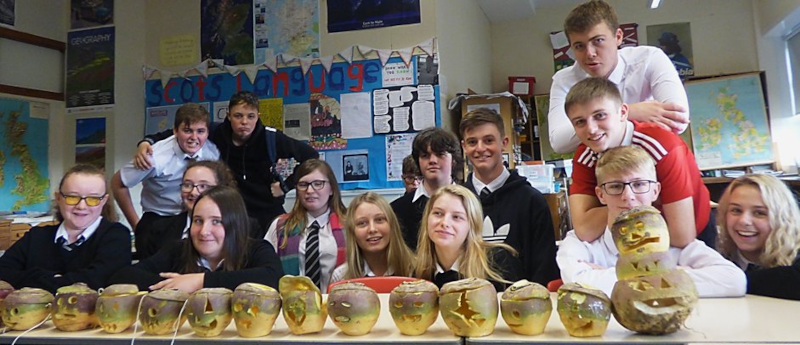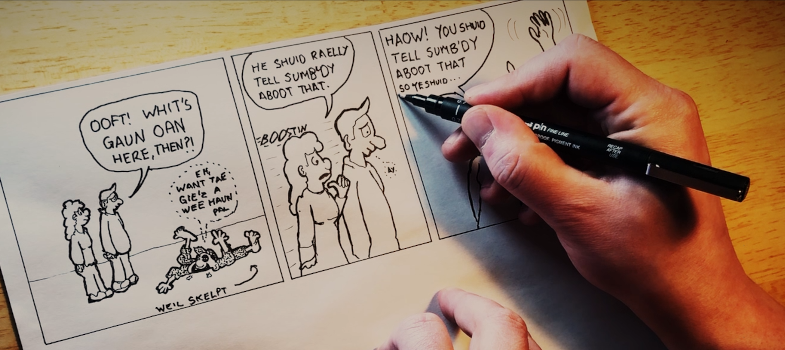Scots and Social Studies at Secondary School

3. Input 2
Activity 2
Cross-curricular geographical focus
This cross-curricular activity is a stimulus for planning learning about Scots place-names and landscape features in your local area and beyond. You will use what you learn here again in Lesson 1 of the Application section.
Signposts, street names and Ordnance Survey (OS) maps are a rich source of Scots words and often contain historical and cultural information. A quick look at your local OS map can reveal words like Ben, Glen, Haugh, Heugh, Ness, Aber, Strath, Dun, Kip, Law, Burn, Nether, Meikle which may describe geographical features, locations, functions or historical events. Broxburn, for example, describes the stream of the brock or badger. Craigandargity originates from the Gaelic word for silver rocks and was then borrowed into Scots. Local signposts may show Scots names whose origin may be Gaelic, Old Scots, Norse. The names that folk use may also differ from the name on signs, e.g. Gardenstown is referred to locally as Gamrie, and folk from there are Gaimricks.
Now complete parts A and B of Activity 2.
Activity 2.A Scots place-names
Read the piece Sauchs, Scaurs and Signage by author James Robertson on the Scots Language Centre website site. Then make notes on these five questions:
What are the author’s views on the erosion of place-name words?
Do you think Scots names should feature on signs in a similar way to Gaelic names? Give reasons for your view.
Give examples of signage names in your local area and write what languages and meanings you think they hold.
Watch the video clip on Place names from the Northeast, and consider names of local places or features which don’t appear on signs or maps.
What learner activities or outdoor learning projects could you plan around local names? Note down some first ideas for activities and related materials.
Compare your answer with our .
Activity 2.B Geographical landscape features in Scots
As well as place names there are a myriad of Scots names for geographical features, which can be explored in the Broad General Education or linked to SQA units in National and Higher Geography and the Scots Language Award.
Use the resources in this activity and other resources you may have found to generate ideas for a lesson on ‘Scots language and geographical features in Scotland’s landscapes’.
To help with your planning you might want to use the
- extensive Scots place-name glossary at the University of Glasgow
- Learning resource: Scots names for landscape features
Make a note of your ideas in your Learning log.
Compare your answer with our .
Whilst the activities here have focused on place names and landscape features, there are many other geographical contexts for engagement with Scots, as mentioned in the introduction.
Scots weather words are particularly rich and can be explored in conjunction with weather projects in S1-3 Geography lessons, as well as S3-6 Scots Language Award lessons. There are many good Scots weather resources available on the Scots Language Centre website, and the BBC. Once weather words have been explored, learners can construct and present a weather forecast in Scots as part of the Understanding and Communicating Unit of the Scots Language Award.
A good source of video interviews of Scots speakers who have knowledge of fishing, beekeeping, farming and other geographical topics is Scots Radio.
